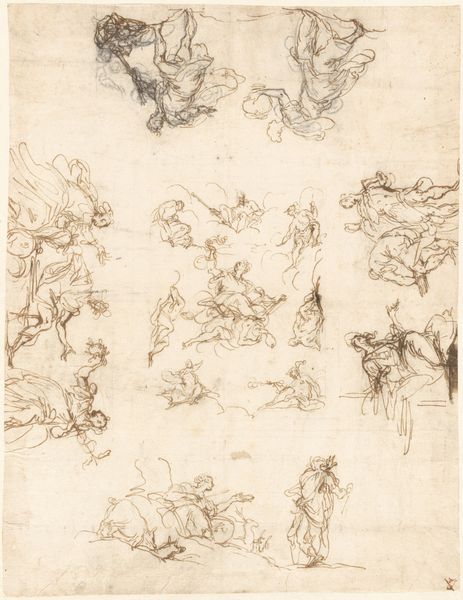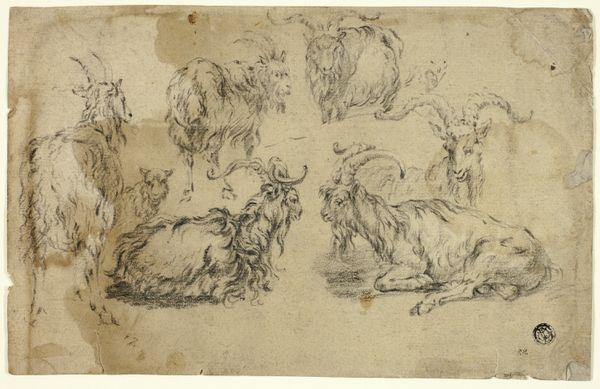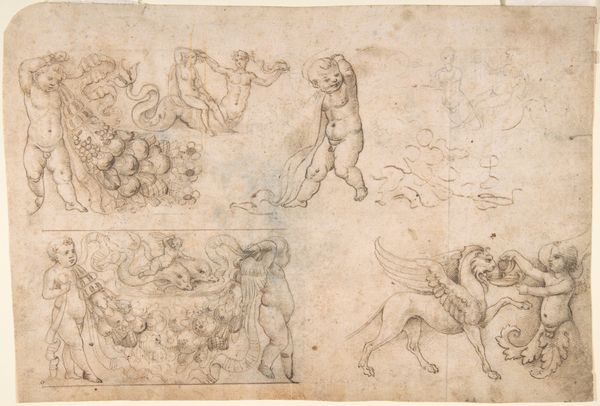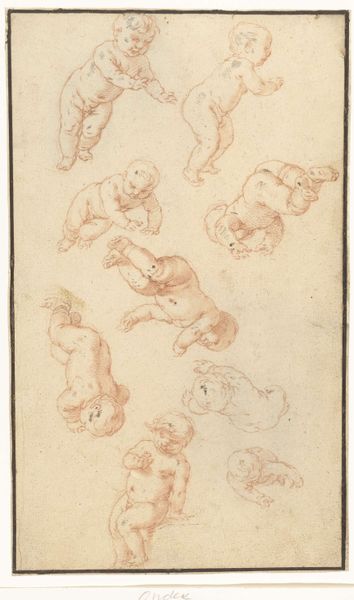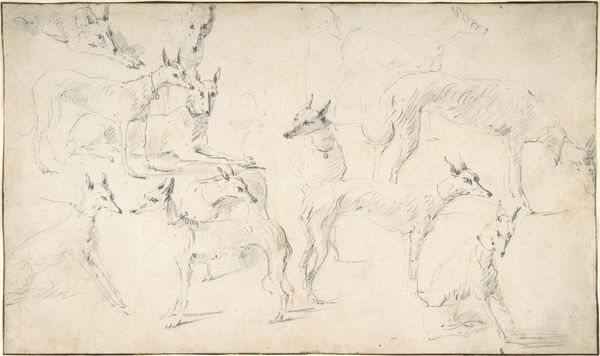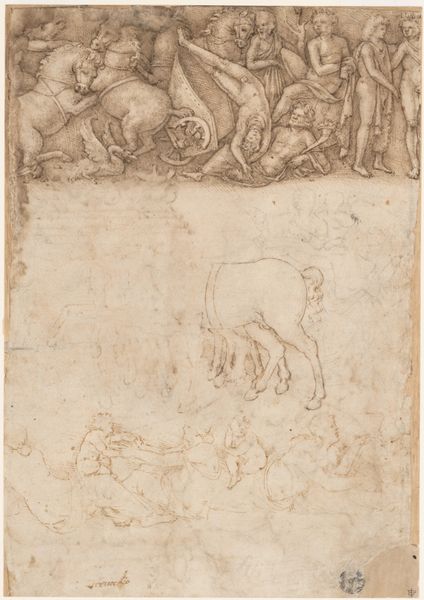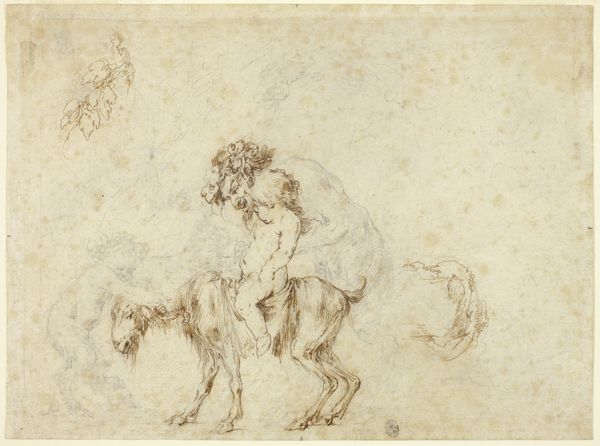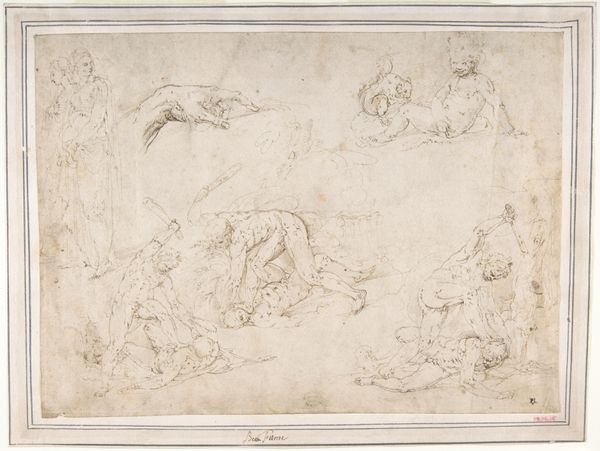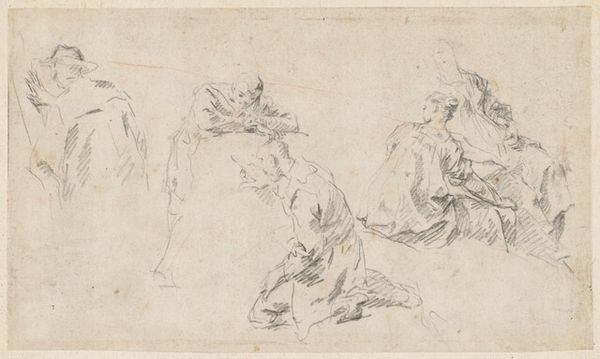
drawing, paper, pencil
#
drawing
#
pencil sketch
#
landscape
#
paper
#
pencil
Dimensions: height 286 mm, width 397 mm
Copyright: Rijks Museum: Open Domain
Curator: Looking at this pencil drawing titled "Studieblad met geiten en schapen" – or "Study Sheet with Goats and Sheep" – dating from the late 18th to early 19th century and attributed to Hendrik Stokvisch, what captures your immediate attention? Editor: It evokes a pastoral calm. The soft lines and muted tones create a serene, almost dreamlike atmosphere, like a half-remembered scene from childhood. But I'm struck by the variety; he’s not just mindlessly copying but really trying to understand the anatomy of each animal. Curator: Precisely! The “study sheet” format allows us to see the artist’s process. The repetition of motifs – goats and sheep in various poses – highlights the practice of close observation. It echoes the broader 18th-century fascination with the natural world. We see these "study sheets" also coming out of the academies as exemplary. Editor: Absolutely. Beyond the immediate observation, the drawing connects to deeply rooted archetypes. Sheep and goats have carried heavy symbolic loads throughout Western history – sacrifice, innocence, fertility, even stubbornness and the scapegoat archetype, if you consider the negative connotations of "goat". Curator: Right. Consider the historical context. The rise of agrarianism and landscape painting celebrated the virtues of rural life. Sheep in particular symbolized wealth and prosperity for the land-owning class. This could well be part of that idealized vision. It certainly speaks to the romantic idea of the simple life that underpinned the late 18th century. Editor: So it's not just livestock but a statement about society and values. It reveals a certain level of reverence toward the domestic animals in the image. Each placement gives them individual merit, not solely a reference to their utility. The act of sketching itself elevates them, offering a dignity perhaps unacknowledged at the time. Curator: Exactly! The image, beyond a simple study of form, acts as a window into the values of its time – reverence for nature, the celebration of agrarian ideals, and the artistic process of learning through close observation. Editor: A seemingly simple sketch becomes, under closer examination, a mirror reflecting the complex relationship between art, nature, and societal values.
Comments
No comments
Be the first to comment and join the conversation on the ultimate creative platform.
